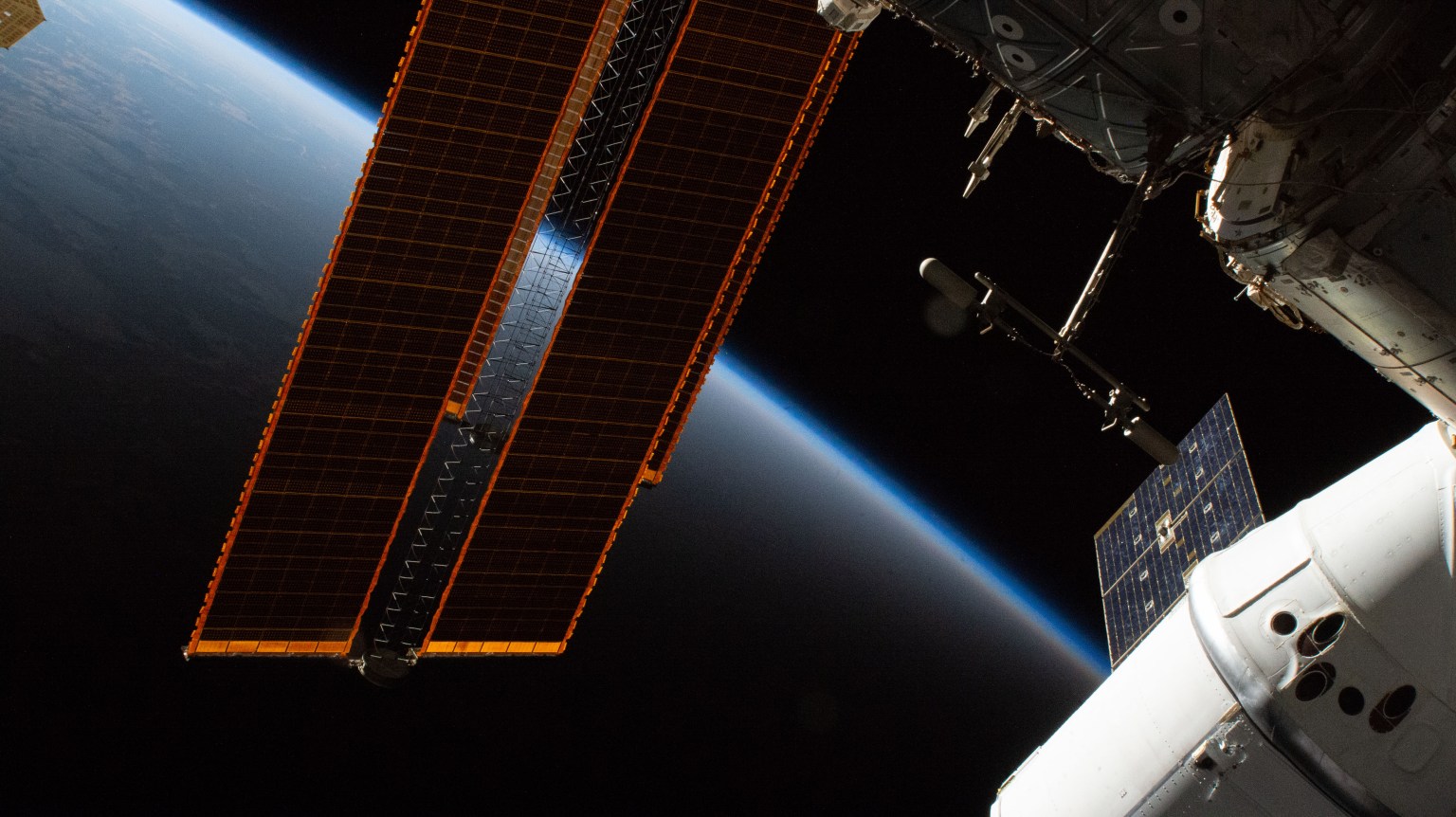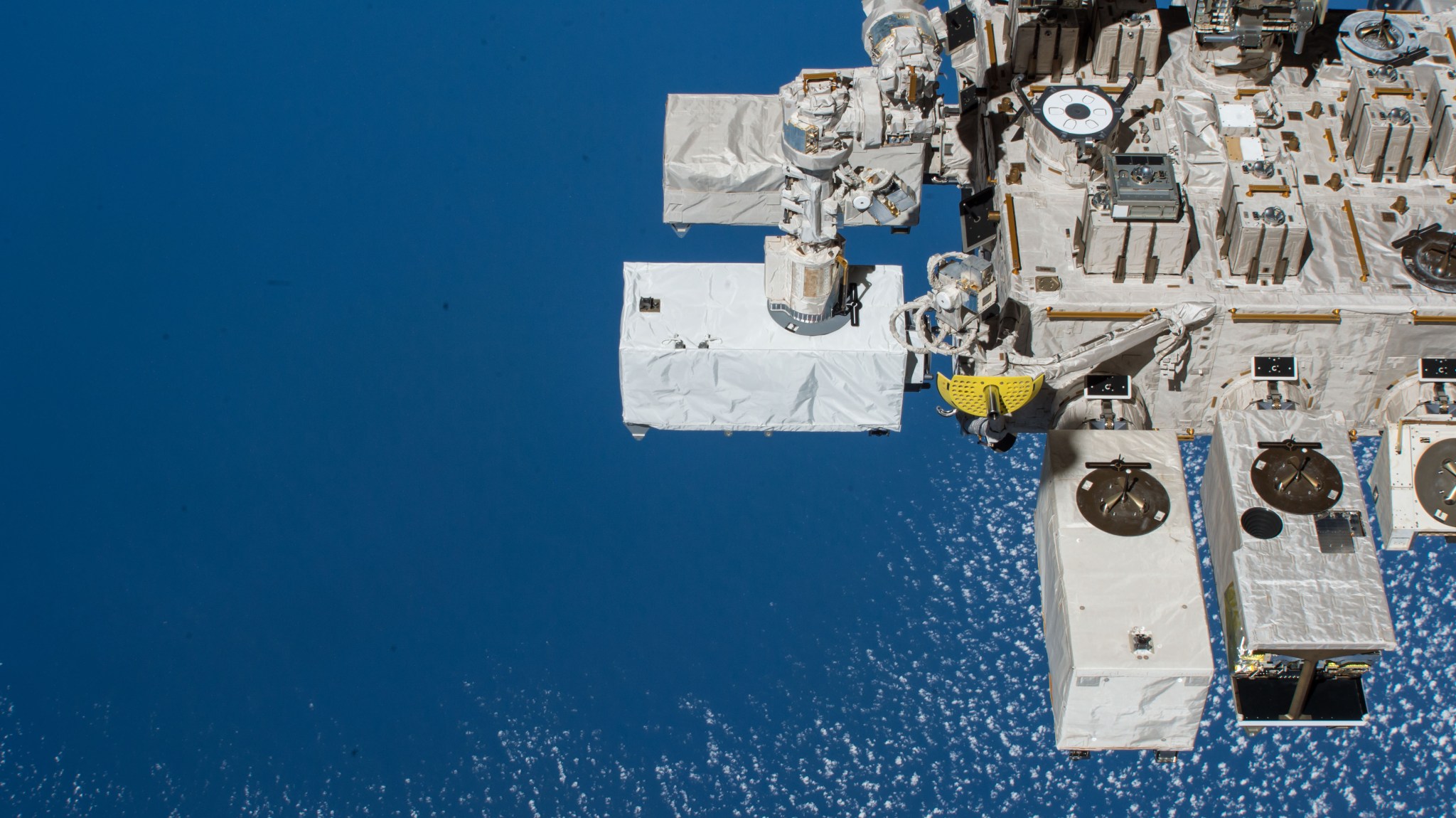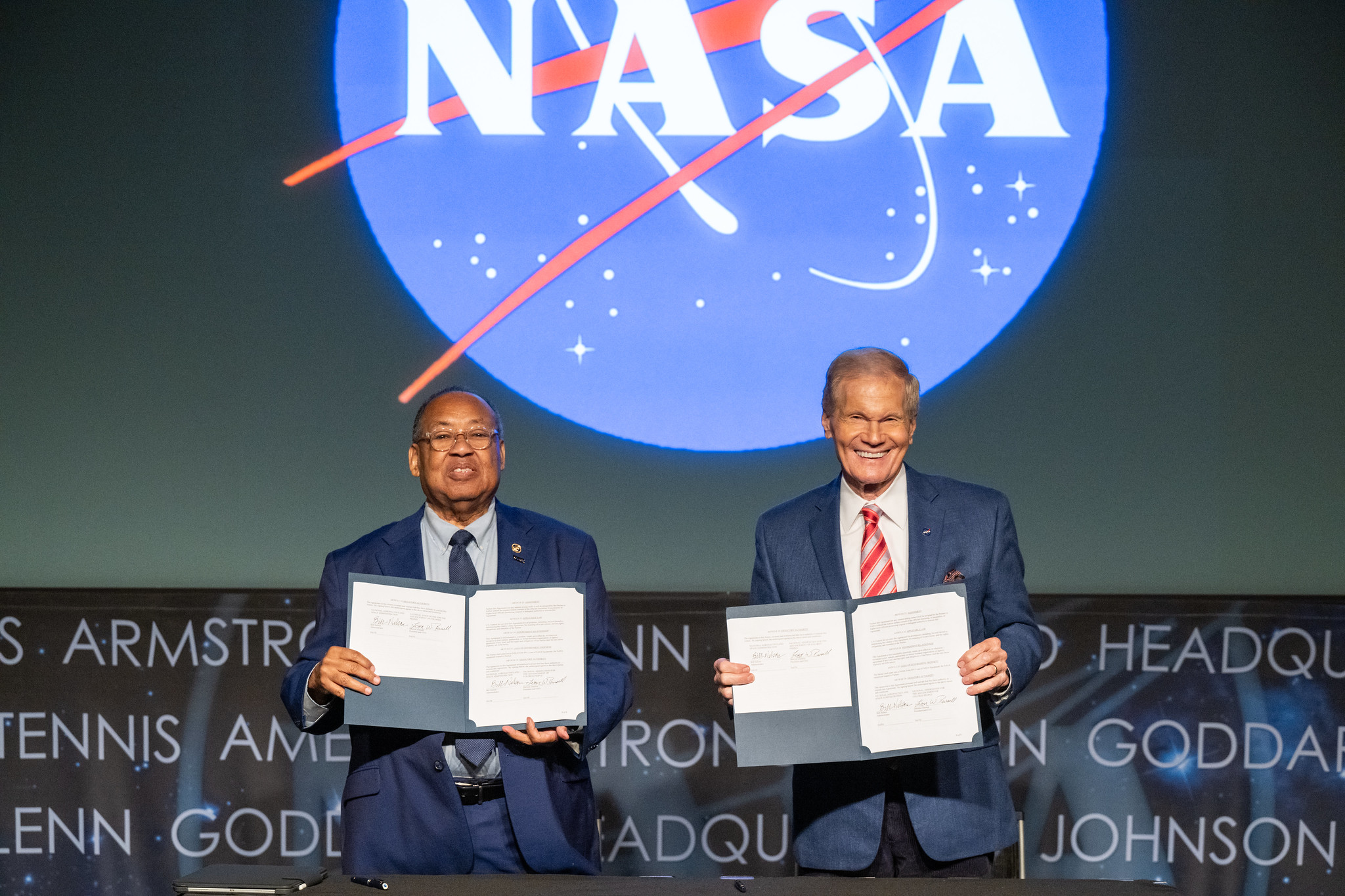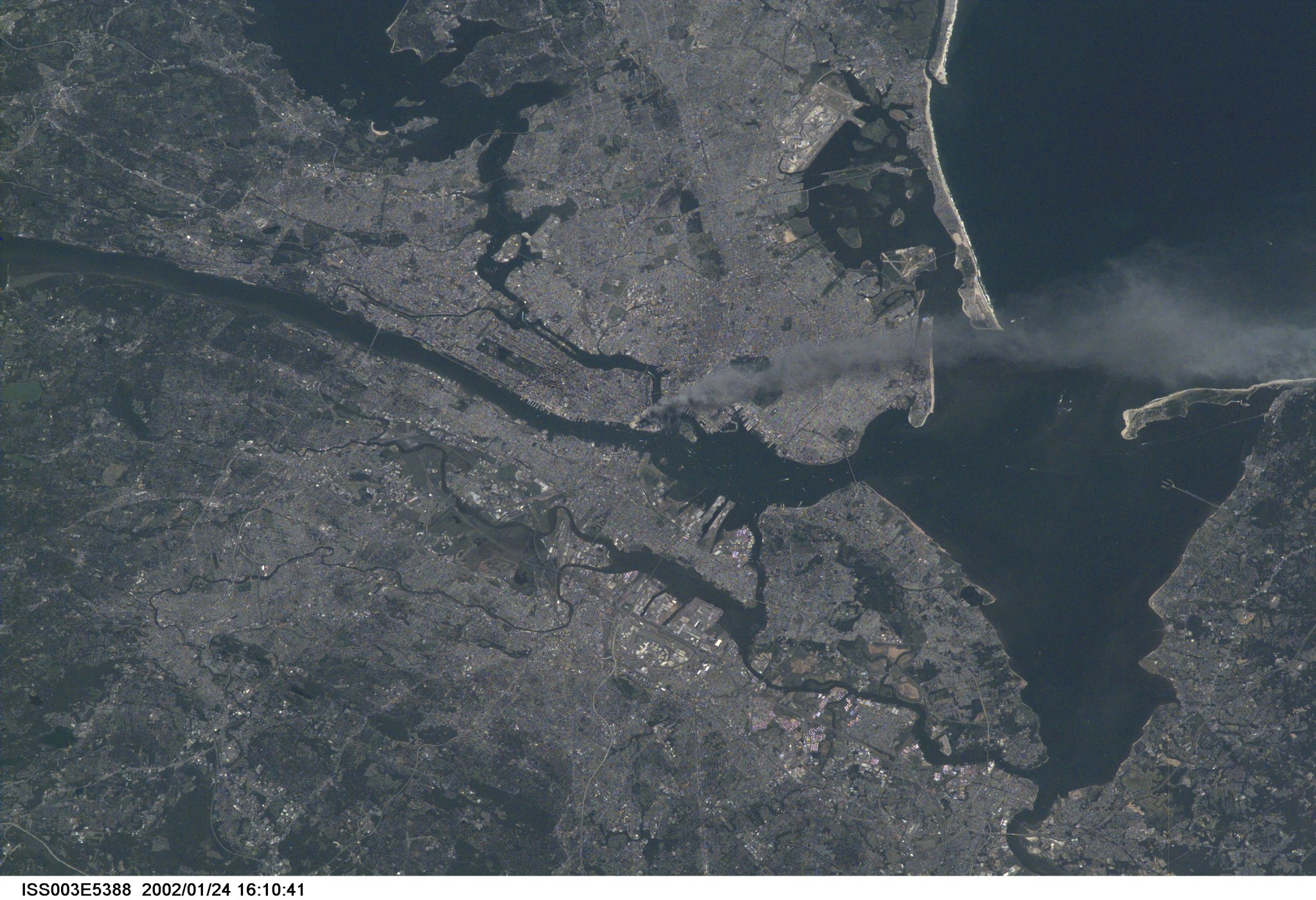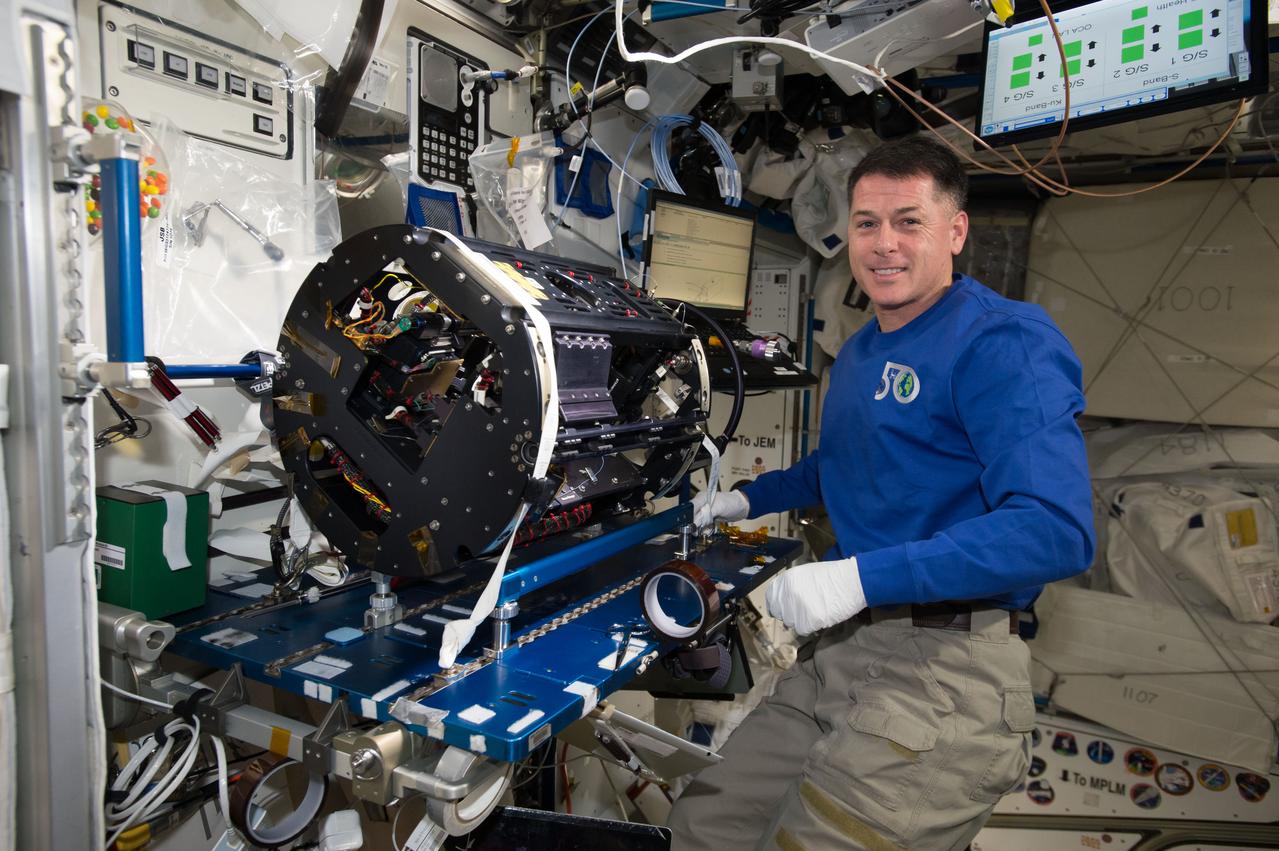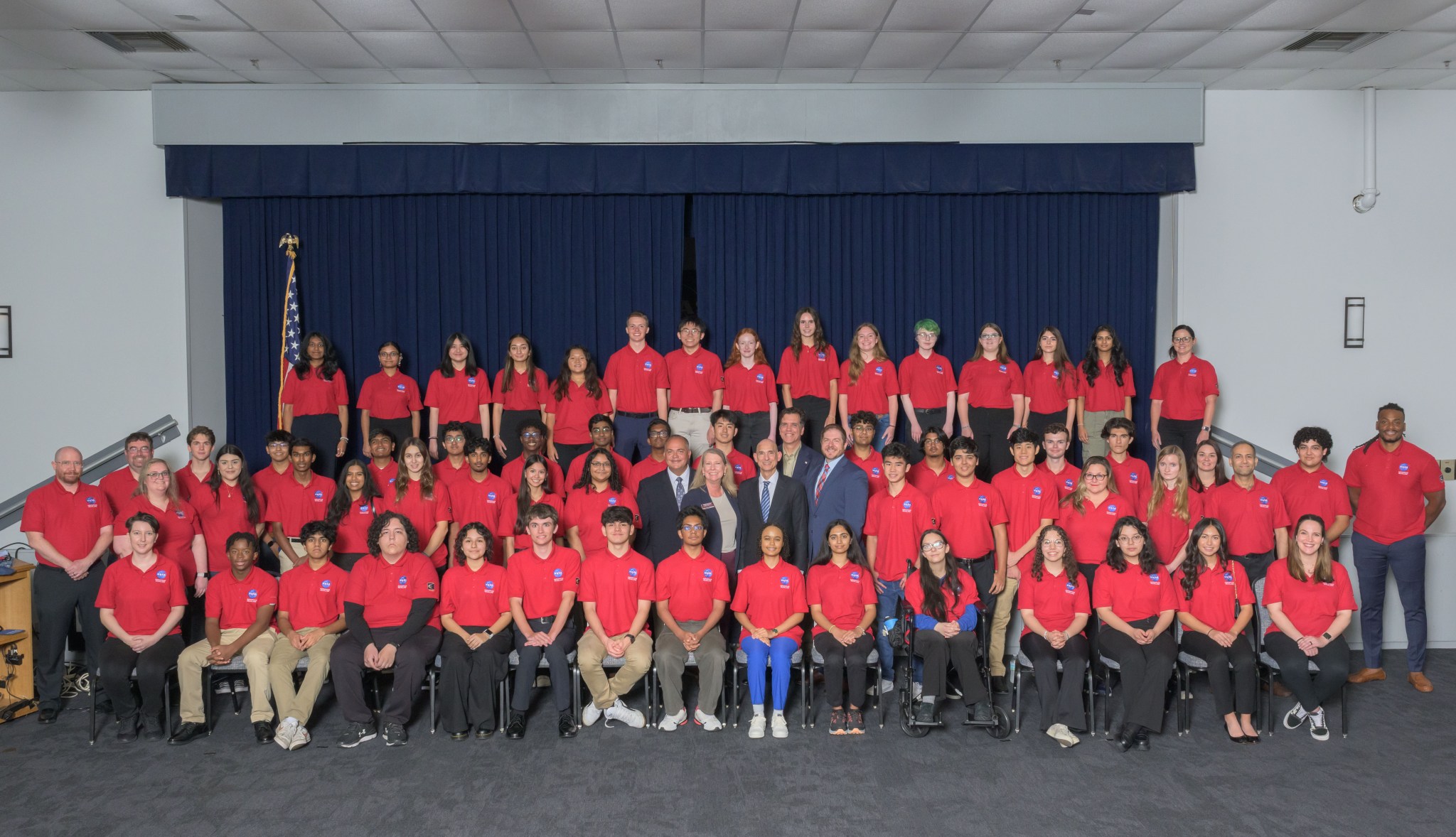4 Min Read Educational Activities in Space The SpaceX Dragon resupply ship (at right) and a pair of the International Space Station's main solar arrays foreshadow a trek into an orbital sunset. Credits: NASA Science in Space: September 2024 As students of all ages returned to school this month, crew members on the International Space Station continue to conduct a variety of educational programs and activities that support learning on the ground. These efforts are part of a wider commitment at NASA to engage, inspire, and attract future generations of…
Read MoreCategory: General
Anything and everything space
Station Science Top News: September 20, 2024
Researchers found that eddies, or swirling wind patterns, increased moisture evaporation in an alfalfa field. A better understanding of the complex exchange of water and heat between the ground and atmosphere could improve remote sensing products and their use in agricultural water management. The station’s ECOSTRESS instrument takes high-resolution thermal infrared measurements of Earth’s surface that provide data on changes in water availability, vegetation water stress, and agricultural water use. Researchers use observations from the USGS Landsat 8 and 9 satellites and ECOSTRESS to validate climate models and update data…
Read MoreNASA, NAACP Partner to Advance Diversity, Inclusion in STEM Fields
3 min read Preparations for Next Moonwalk Simulations Underway (and Underwater) NAACP Board Chair Leon Russell, left, and NASA Administrator Bill Nelson, right, sign a Space Act Agreement between NASA and the NAACP during a 5th Annual Hidden Figures Street Naming Anniversary event Thursday, Sept. 19, 2024, at the Mary W. Jackson NASA Headquarters building in Washington. NASA/Keegan Barber During an event Thursday, NASA and the National Association for the Advancement of Colored People (NAACP) signed a Space Act Agreement to increase engagement and equity for underrepresented students pursuing science,…
Read MoreAstronaut Frank Culbertson Letter from September 11, 2001
ISS003-E-5388 (11 September 2001) — One of a series of pictures taken of metropolitan New York City (and other parts of New York as well as New Jersey) by one of the Expedition Three crew members onboard the International Space Station (ISS) at various times during the day of September 11, 2001. The image shows a smoke plume rising from the Manhattan area. The orbital outpost was flying at an altitude of approximately 250 miles. The image was recorded with a digital still camera. Please note: The date identifiers on…
Read MoreNASA Ames Fire Department to Conduct Live Aircraft Fire Training
The NASA Ames Fire Department will conduct emergency response fire training on the west ramp of the Moffett Federal Airfield between 8 a.m. and 8 p.m. PDT Tuesday, Sept. 10 through Saturday, Sept. 14. The media and the public are advised that sirens may be audible and smoke plumes and flames may be visible from U.S. Highway 101 during this time. However, officials generally expect little to no smoke. The session will include a live burn created by a propane-fueled aircraft fire simulator at the field. The drill is intended to prepare Ames…
Read MoreProyecto de la NASA en Puerto Rico capacita a estudiantes en biología marina
9 Min Read Proyecto de la NASA en Puerto Rico capacita a estudiantes en biología marina Una península cubierta por un bosque verde en la isla de Culebra se adentra en las aguas azules del Caribe mientras una tormenta cae a lo lejos. El azul turquesa que rodea la isla indica la presencia de aguas poco profundas, que son el hogar de los famosos arrecifes de coral de esta isla. Credits: Centro Ames de la NASA/Milan Loiacono Read this story in English here. Tainaliz Marie Rodríguez Lugo respiró hondo, se ajustó…
Read MoreStation Science Top News: August 29, 2024
Researchers used an interferometer that can precisely measure gravity, magnetic fields, and other forces to study the influence of International Space Station vibrations. Results revealed that matter-wave interference of rubidium gases is robust and repeatable over a period spanning months. Atom interferometry experiments could help create high-precision measurement capabilities for gravitational, Earth, and planetary sciences. Using ultracold rubidium atoms, Cold Atom Lab researchers examined a three-pulse Mach–Zehnder interferometer, a device that determines phase shift variations between two parallel beams, to understand the influence of space station vibrations. Researchers note that atom sensitivities and visibility degrade…
Read MoreAssure 2017
Home ASSURE 2017 has successfully concluded. UPDATES 2017-10-01: ASSURE 2017 concluded successfully. The accepted papers appear in the SAFECOMP 2017 Workshop Proceedings. Thank you for attending! See you in 2018. 2017-08-28: The ASSURE 2017 Program has been announced. The final program is contingent on registration. If you haven’t already done so, please register for ASSURE 2017 via SAFECOMP 2017. 2017-08-27: ASSURE 2017 will be held on Tuesday, Sep. 12, 2017. The accepted papers and program will be posted here soon. 2017-06-02: Authors of accepted papers have been notified. The final, camera-ready version and a signed copyright…
Read MoreNASA Celebrates 25 Years of High School Aerospace Scholars
For 25 years, the Office of STEM Engagement (OSTEM) at NASA’s Johnson Space Center has inspired and provided high school students across the state of Texas with NASA-focused learning experiences through the High School Aerospace Scholars (HAS) program. The OSTEM team celebrated the milestone on Monday, July 29 at Johnson’s Gilruth Center with poster sessions, special presentations, and a networking reception. Fifty-one students who participated in the 2024 High School Aerospace Scholars program were invited to NASA’s Johnson Space Center in Houston to participate in an on-site experience. NASA/James Blair…
Read MoreAssure 2015
Home ASSURE 2015 has successfully concluded. UPDATES 2015-10-05: ASSURE 2015 concluded successfully. The accepted papers appear in the SAFECOMP 2015 Workshop Proceedings. Thank you for attending! See you in 2016. 2015-06-24: Pippa Moore of the UK Civil Aviation Authority will give an invited keynote talk! 2015-06-24: The ASSURE 2015 Program has been announced. The final program is contingent on registration. If you haven’t already done so, please register for ASSURE 2015 via SAFECOMP 2015. 2015-06-15: ASSURE 2015 will be held on Tuesday, Sep. 22, 2015. The accepted papers and program will be posted here soon. 2015-06-15: Authors of…
Read More